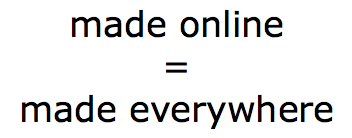Connecting all of the Connections
José van Dijck's (2013) observations and critical history of social media were well organized and supported. At times it read like a research paper, which, essentially, it was: a critical history of social media. What van Dijck loses at times is the key term of connectivity. A great many people who know social media will read this book and know that everything is connected and that behind the terms of services and promises of neutrality and transparency are businesses that have to make money. What can be made in one space can be shared in another—there are no boundaries online, only connectivity (which is almost always eventually monetized).

Following van Dijck's line of reasoning and the masterful painting she created of social media, she was asking the audience to rethink how social media has been taught, theorized, analyzed, praised, destroyed, and in many cases, perhaps unwisely viewed as a panacea for democratic public discourse. One of the last lines of the book echoes the concerns of scholars of social media over the past few years: "the early expectation that Web 2.0 technology was going to usher in a platformed sociality conditioned by user equality and equal access turned out to be utopian" (p. 159). Many scholars of social media assumed Web 2.0 would transform the way we communicate and share ideas, which it did, but in a much more monetized manner.
Having taught professional writing and web authoring courses, I believe Connectivity holds great value as a guide for students and colleagues looking to better grasp the origins of the online spaces they inhabit. While teaching code and writing and design may be fun and complicated, understanding the origins of the code and theories for their evolution are essential. For those in Rhetoric and Composition, any class considering the nature of digital rhetoric would find this book valuable as a clear framework for understanding social media and online collaboration. For myself, as someone who has studied and taught this topic for some time, the text is an elegant history. However, if it were to be used in a class, it would be critical for students to work together, along with instructors, to help each other make the connections the author illuminated.